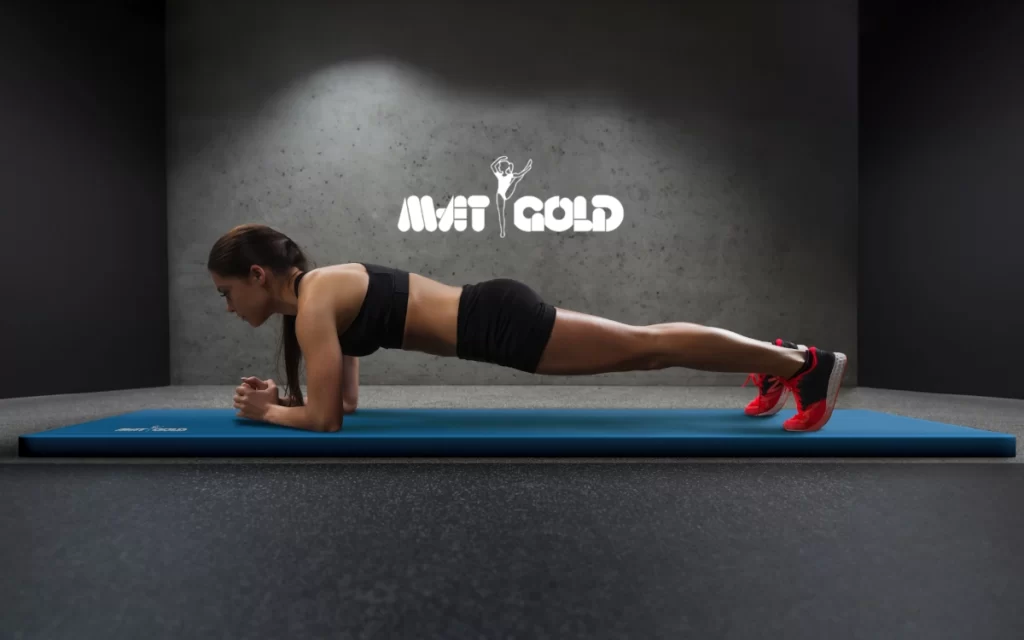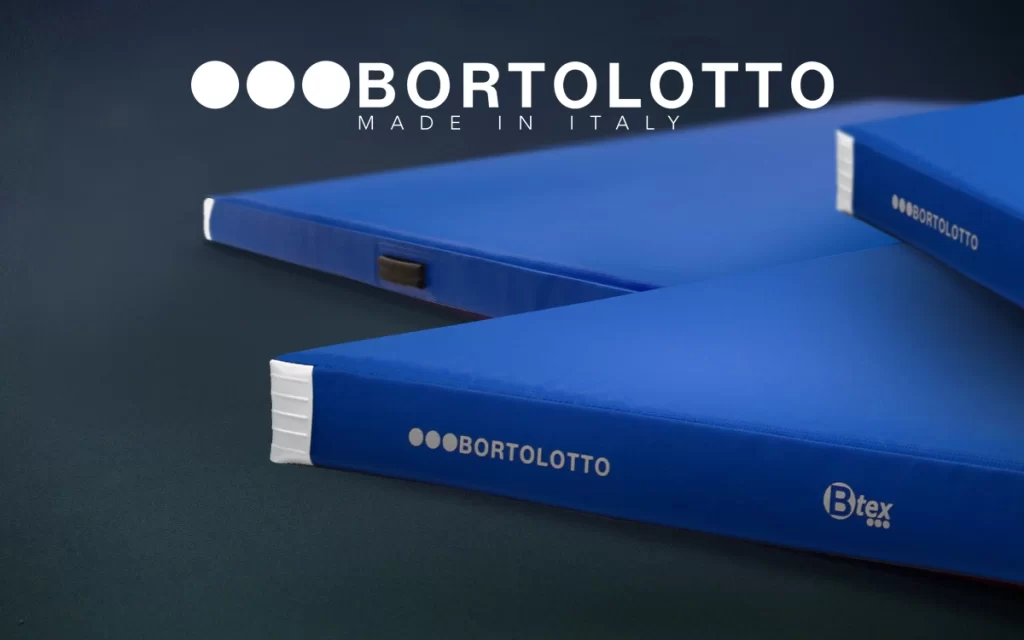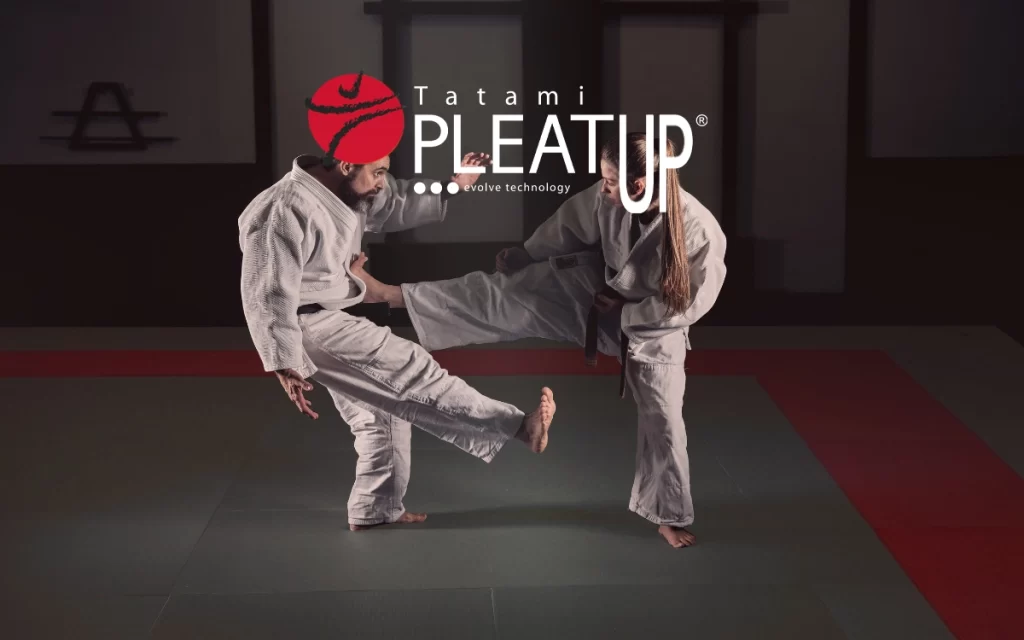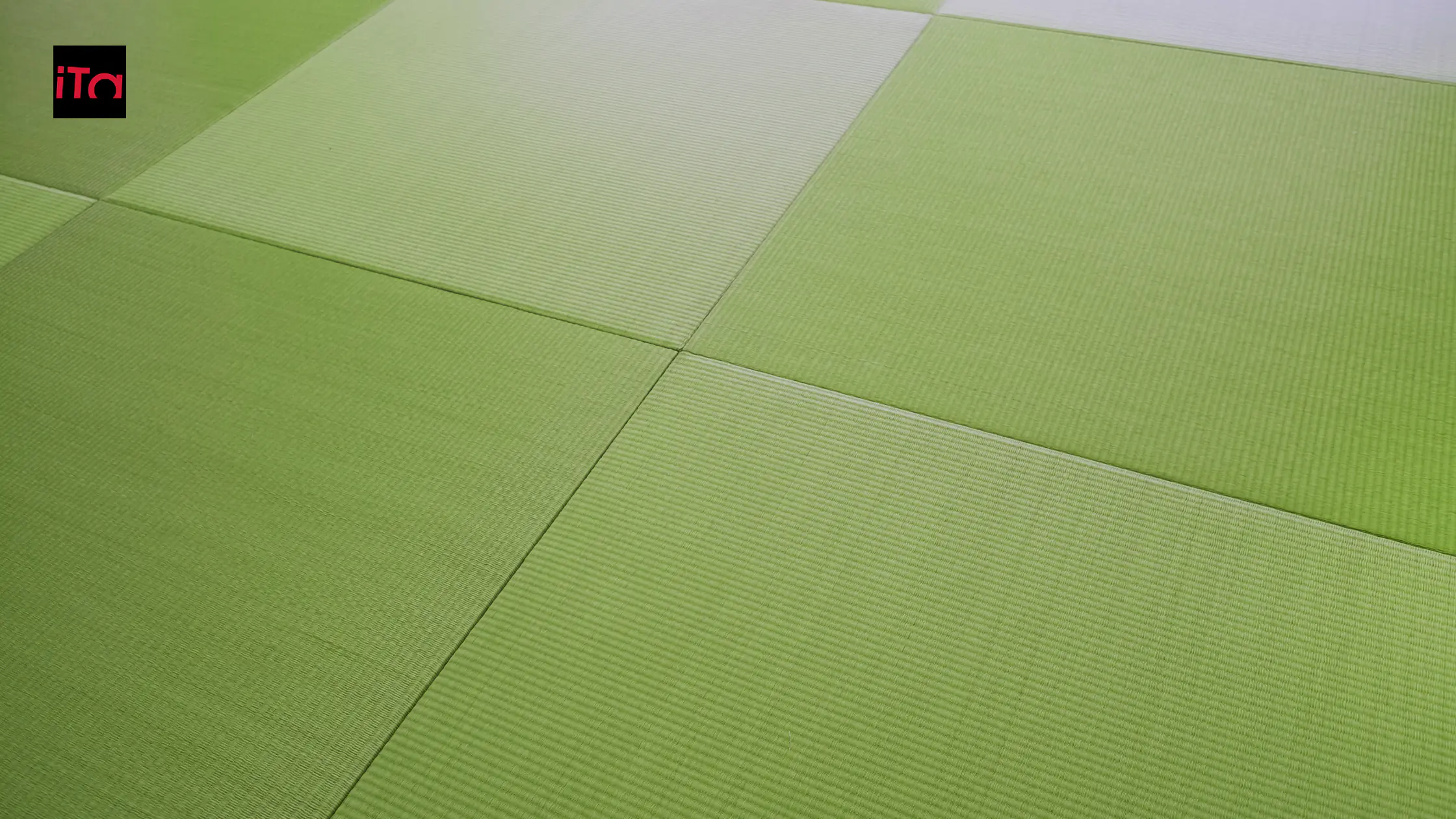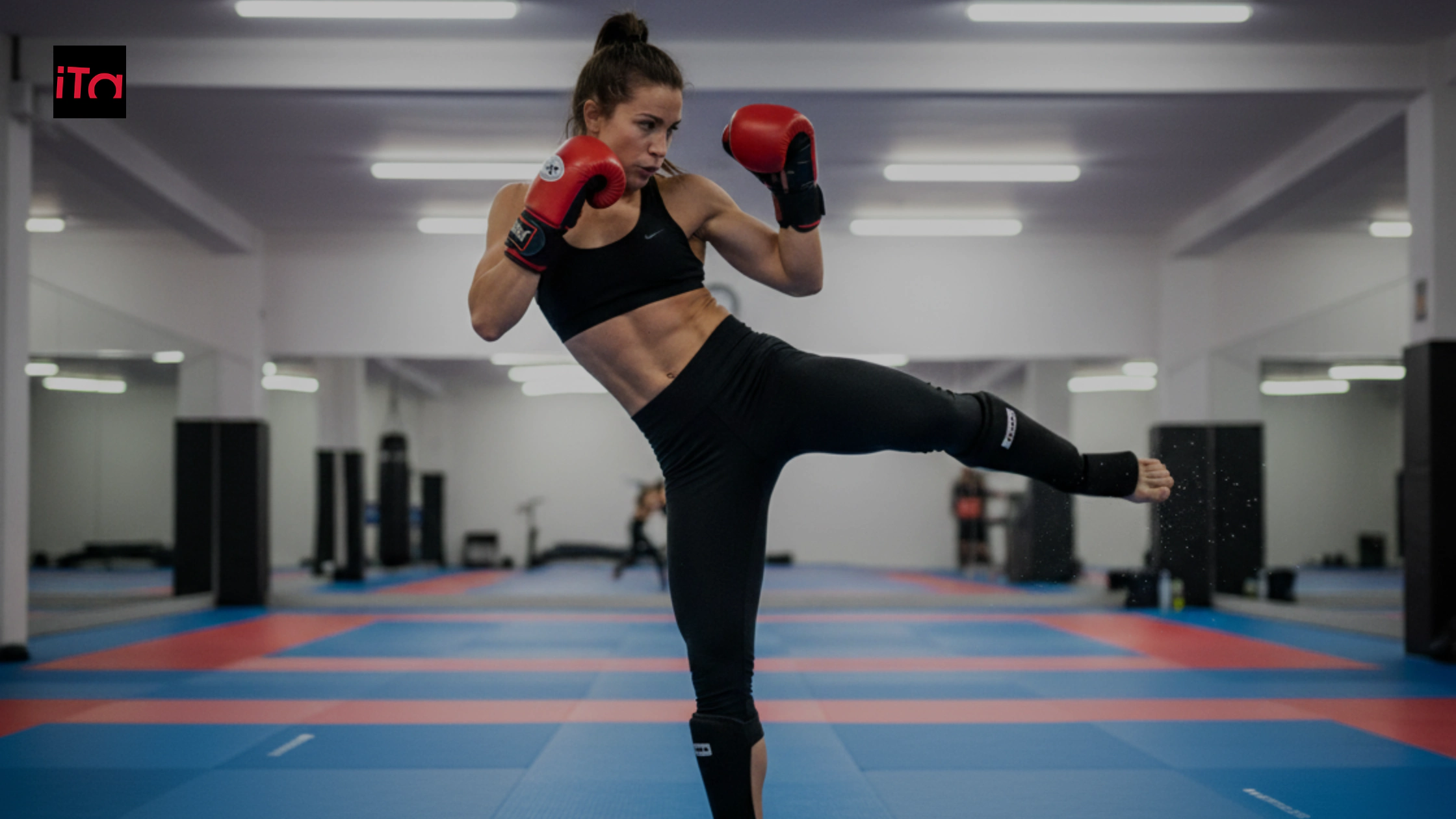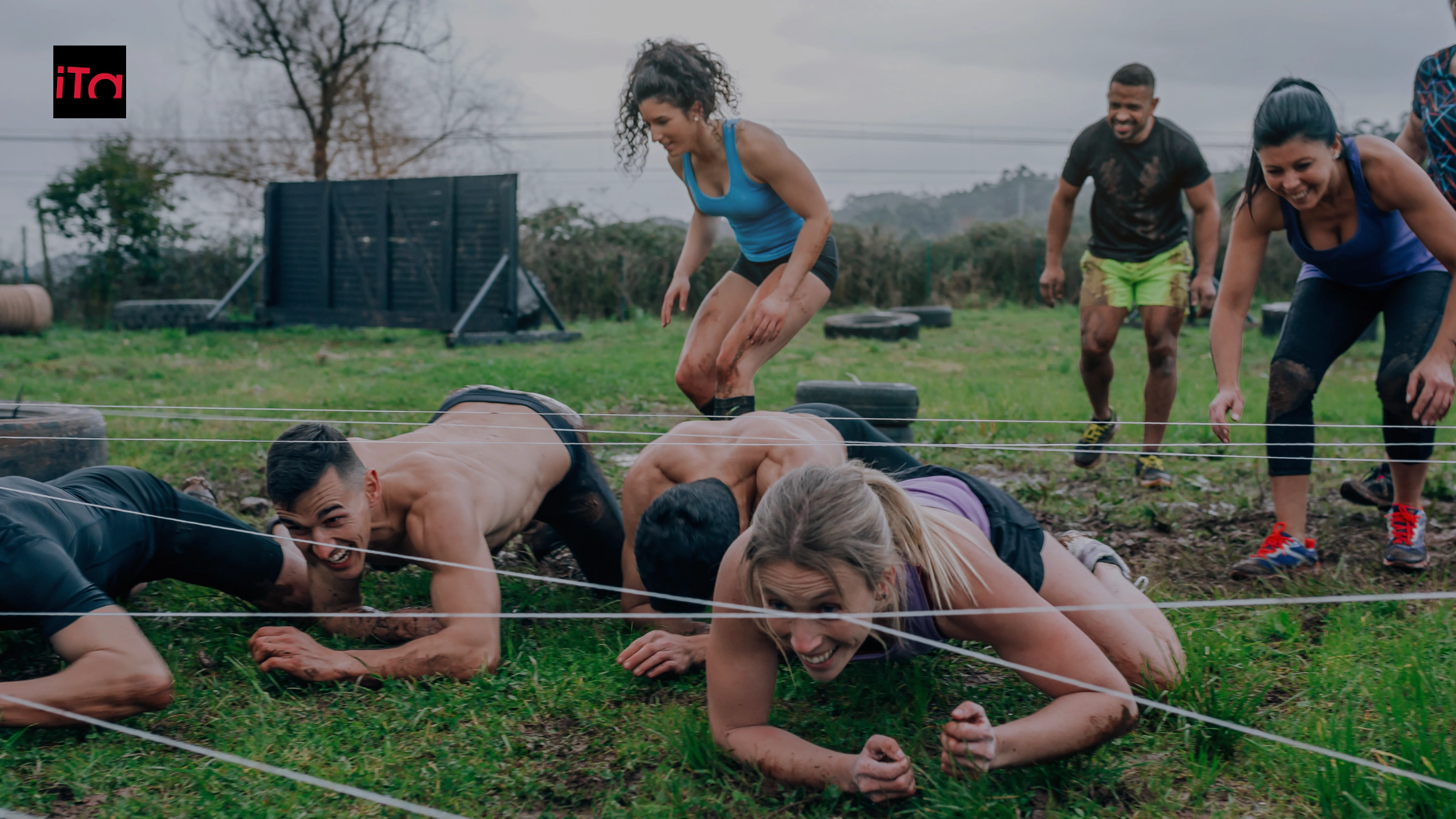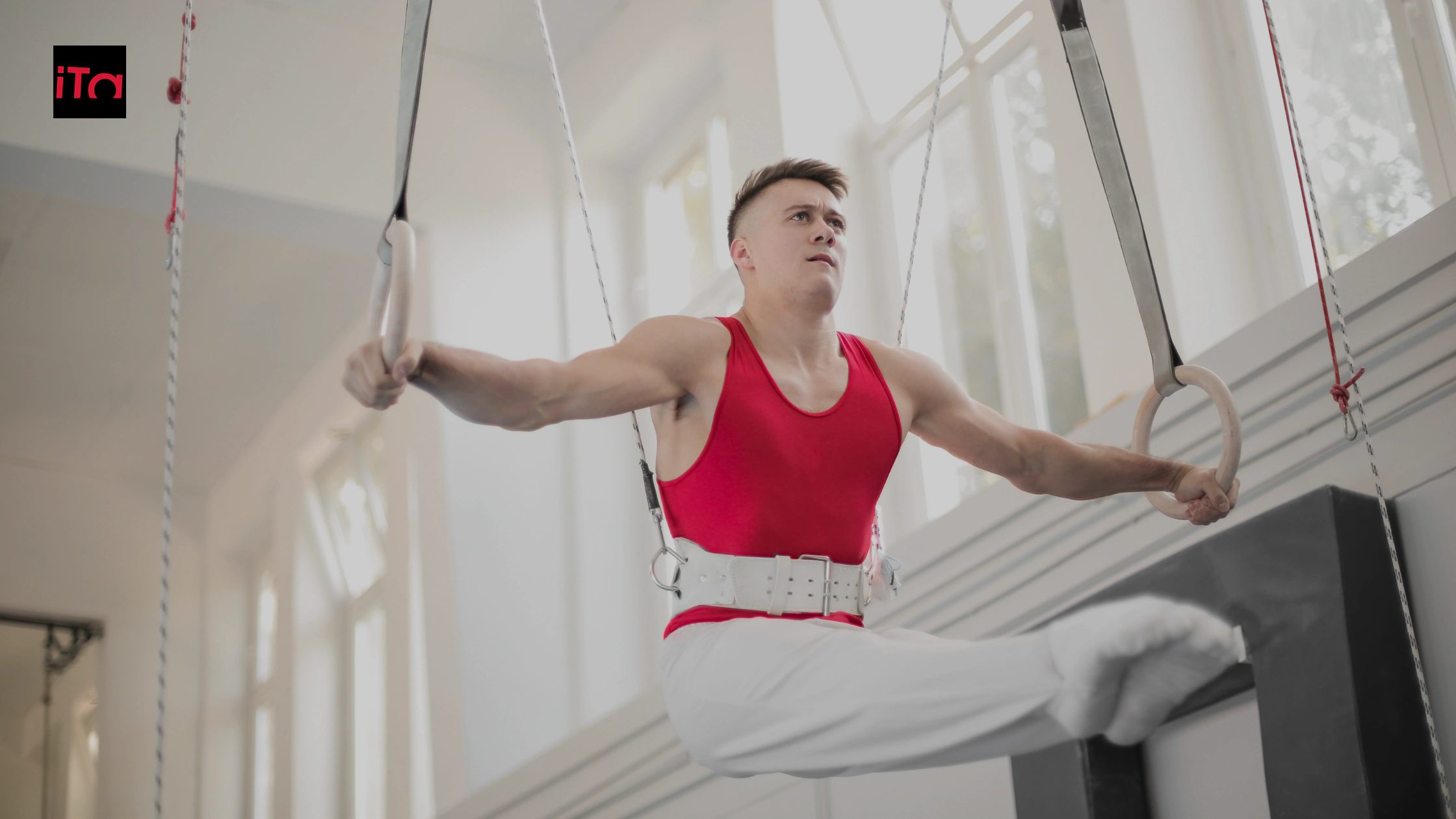How to Secure Tatami: A Complete Guide to Safe and Long-Lasting Anchoring
Properly securing the tatami is a crucial step in ensuring the safety, stability, and long-lasting durability of your training floor. A well-anchored tatami prevents unwanted movement during throws, falls, or combat, preserving the fluidity of the technical movement and reducing the risk of injury. Over the centuries, the tatami has maintained its original function of balancing comfort and discipline, evolving into the modern materials used in today's gyms and dojos—as we also explain in History of the tatami: from its origins to combat.
Test the quality of our 2 cm and 4 cm tatami mats firsthand. Free 24-hour shipping.
Request a free sample →
Content index
Why is it important to fix the tatami well?
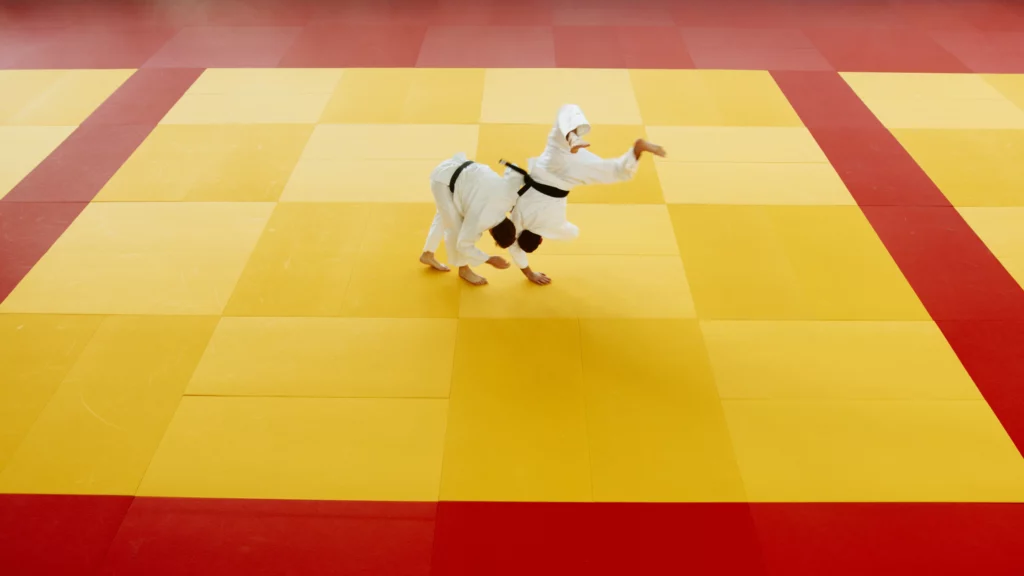
A well-fixed tatami It's not just a matter of aesthetics, but a key element for the safety and quality of training. During more dynamic phases—such as throws, takedowns, or transition techniques on the ground—even a small movement of the panels can compromise the athlete's stability and increase the risk of injury.
Fix the modules correctly ensures constant contact with the floor, reducing slipping and unwanted twisting. Furthermore, it preserves the linearity of the tatami thevisual alignment of the dojo, helping to maintain an orderly and professional environment, as required by the major martial arts federations.
In the professional tatami mats like ours tatami entirely made in ItalyThe interlocking system is specifically designed to ensure grip and stability, even under the most intense stress. This allows you to train with complete concentration, without worrying about the floor, in full respect of tradition and safety.
Types of tatami fixing
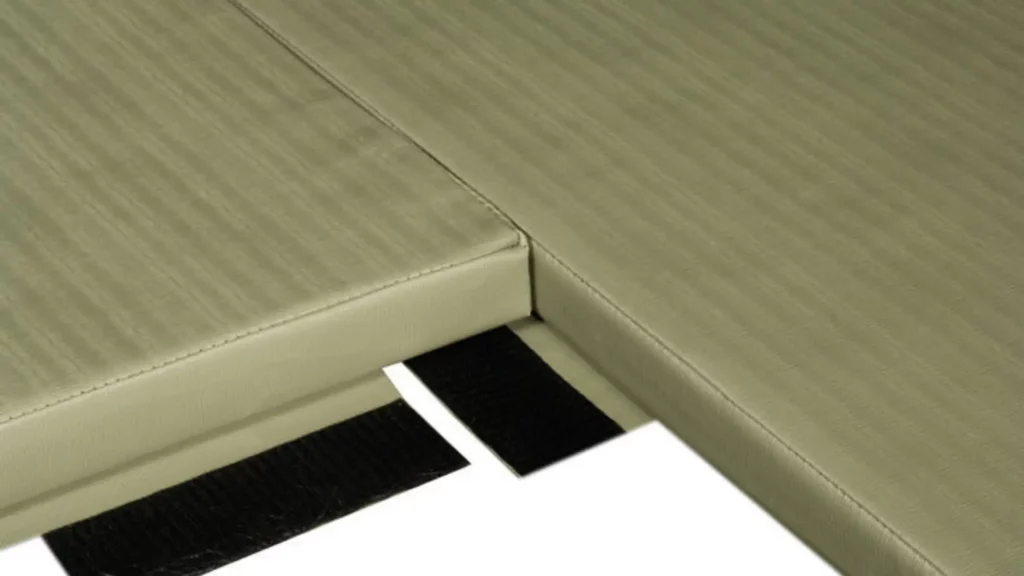
Fix the correctly tatami It is an operation that requires attention and expertise. The choice of anchoring system it depends on the type of tatami, from the underlying surface and the intended use of the space: permanent dojo, competition area or temporary training area.
Let's look at the safest and most professional solutions, adopted by those who have been working in the martial arts sector for years.
1. Fixing with non-slip adhesive tape
It is an economical and temporary solution, used exclusively in temporary solutions.
A applies high-adhesion duct tape along the lower edges or between one row of modules and another, ensuring stability and continuity to the surface.
This method is suitable for those who need a temporary but secure fixation, without having to permanently intervene on the flooring.
The tape can be removed easily and leaves no residue, keeping the base and modules of the tatami intact.
2. Fixing with Velcro or professional strips
This is one of the most reliable techniques for fixed dojos as an alternative to the more solid and secure frame fixing.
The industrial velcro strips They are applied to the back of the modules or to a support base, creating a modular and fairly adherent system.
The main advantage is the stability in the short to medium term, combined with the possibility of remove panels for cleaning or maintenance.
It is a clean, long-lasting solution used in systems where safety comes first.
3. Fixing with perimeter frame or skirting board
In case of floating tatami or on wooden bases, the most effective system is the one with perimeter containment.
The modules are fitted inside a frame or structural skirting board that blocks lateral movements, ensuring a compact and uniform surface.
This is the best solution for permanent spaces or reception rooms, where aesthetics and safety must coexist perfectly.
4. Modular and temporary solutions for combat areas
When the training or competition area is temporary, tatami mats that are easy to install and remove are needed, but with the same level of safety as fixed models.
The best solutions are the systems professional modular as:
- Tatami Pleat Up Modular: ideal for multipurpose gyms, events or mobile competition areas.
- Tatami Pleat Up Classic: perfect for quickly creating a stable, non-slip surface, without the need for invasive fixings.
Both versions are easy to assemble and disassemble, offering a safe and professional user experience even in temporary contexts.
5. Economical solution: cover the old tatami mats
For those who wish renovate an existing surface without replacing the modules, i combat area cover sheets they represent a practical and low-cost solution.
Made with durable, non-slip materials, they guarantee a uniform, professional look even on older tatami mats. Discover the combat area cover sheets, ideal for dojos, gyms and competitions.
How to prepare the floor before fixing
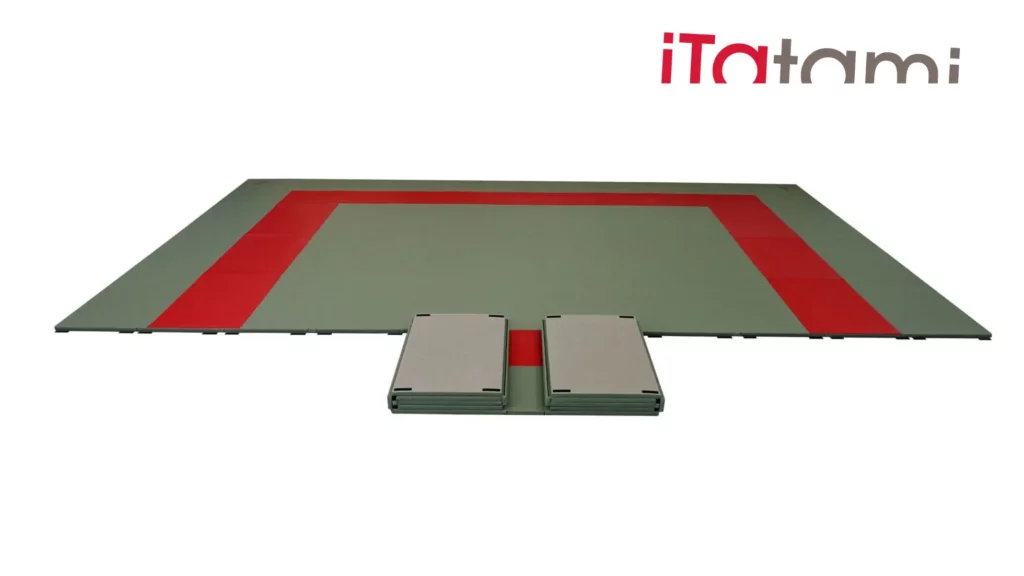
A correct one floor preparation It is the basis for obtaining a stable tatami, long-lasting and safe. Even the best fastening system loses its effectiveness if the underlying surface is uneven or has residue that compromises adhesion. Here are the fundamental steps every dojo or sports center should follow before installation.
1. Cleaning and drying the surface
Carefully remove any dust, sand, or debris: even small particles can create unevenness and cause the modules to move.
The floor must be perfectly dry, especially if made of concrete or linoleum, to avoid the formation of humidity under the tatami.
2. Leveling and checking the base
Check for unevenness, cracks, or irregularities. A surface that isn't perfectly flat compromises stability and can cause stress on the edges.
If necessary, use thin plywood panels or technical mats to level out uneven areas.
3. Ventilation and humidity control
The tatami must not be placed on floors subject to condensation or infiltrations.
Make sure the room is well ventilated: adequate air circulation helps keep the material in optimal condition over time.
4. Area design and module layout
Before you start fixing, plan the layout of the tatami starting from from the center of the dojo outwards.
This method ensures symmetry and uniformity, as well as better edge alignment.
To determine the exact measurements and number of modules needed, you can consult our martial arts tatami mat size chart.
5. Preparation of the tools
Have tape, Velcro, picture frames, or locking elements handy, depending on your chosen method.
Arranging the materials in advance will allow you to reduce installation times and ensure a clean and tidy job.
Good preparation is half the work: only on a well-finished basis will the tatami be able to offer maximum grip, comfort and safety during every training session or competition.
Expert Advice
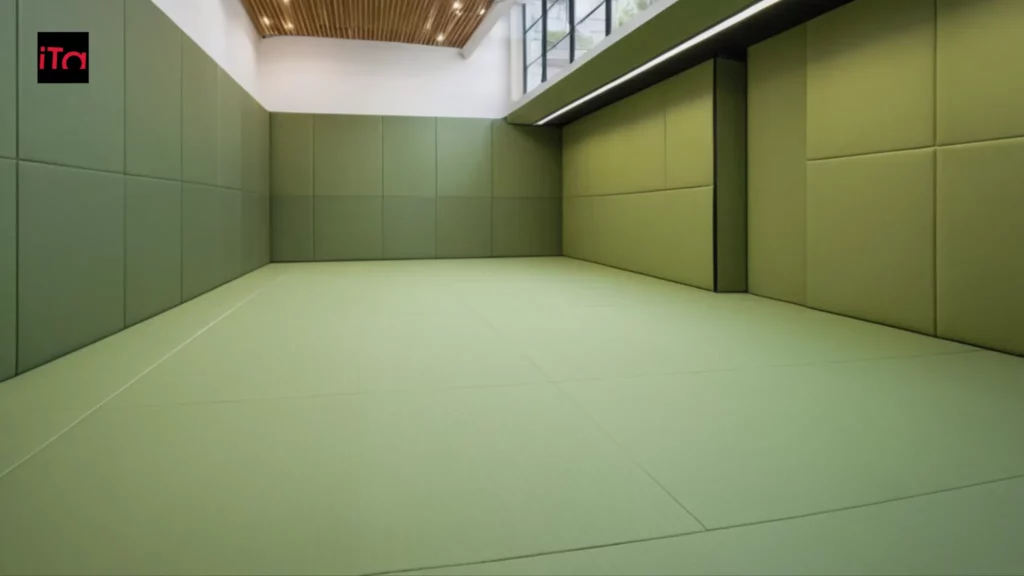
After more than twenty years spent between dojos, gyms and competition areas, I have learned that the stability of a tatami does not depend only on the material or the fixing method, but from attention to detailA small technical adjustment can make the difference between a safe surface and one that shifts with every landing. Here are some practical tips every instructor or manager should keep in mind.
1. Always start from the center
Start the pose from the heart of the dojo and continue outwards.
This way, any differences in cutting or edging will end up at the edges, keeping the central area – the one most stressed – perfectly stable and symmetrical.
2. Check the alignment after each row
After laying a row of tatami, check that the corners remain aligned and that the modules do not form microcracks.
A difference of just 2 mm can, over time, compromise the entire alignment of the floor.
3. Maintain periodic maintenance
Every three or four months, check the tightness of the edges and fixing points.
In dojos with heavy use, it is useful to periodically replace the tapes or Velcro to maintain a constant level of grip.
4. Clean the tatami with neutral detergents
Avoid aggressive or overly foamy products: they make the surface slippery and ruin the non-slip texture.
Use a damp cloth and a neutral detergent to ensure hygiene and long-lasting durability.
5. Choose professional solutions, avoid cheap puzzles
While the interlocking “puzzle” tatami mats may seem practical, they do not offer the necessary stability and security for martial arts.
Modules tend to separate with lateral movements, increasing the risk of twisting or falling.
Better to focus on certified modular solutions, like the Tatami Pleat Up Classic or Modular, designed to ensure hold, comfort and speed of assembly.
6. If the tatami is old, cover it
When the floor is still structurally good but the aesthetics are ruined, there is no need to change it: just apply a combat area cover.
It is a practical, economical and perfect solution to give new life to the dojo without invasive interventions.
“A well-secured tatami is like a good guard: stable, silent, and ready to support you at all times.”
Mistakes to avoid
Even those with experience setting up dojos or gyms can make small mistakes that, over time, compromise the safety and durability of the mat. Here are the most common mistakes to avoid, based on direct experience in the field.
1. Use glues or silicones
The most serious mistake is to fix the modules with permanent glues: they risk ruining the base of the floor and make any maintenance or replacement impossible.
Furthermore, they alter the natural elasticity of the tatami, reducing its ability to absorb shock.
2. Overlay the modules
The tatami must always be laid on a single level.
Overlapping creates rigid and unstable areas, dangerous if dropped or rolled. Each module must adhere perfectly to the underlying surface.
3. Install on damp or uneven floors
Humidity is the number one enemy of the tatami.
A wet or condensation-filled base can promote the formation of mold, peeling, and bad odors.
Before installing, always check that the floor is dry, level and well ventilated.
4. Choose inexpensive tatami puzzles
Low-quality interlocking tatami mats do not provide the stability needed for intense workouts.
They tend to separate, warp with heat, and can cause injuries during projections.
Better to rely on professional modular systems such as the Tatami Pleat Up or, for those who want to renovate an existing base, to combat area cover sheets.
5. Ignore the perimeter edge
Many dojos focus on internal fixation, but the perimeter edge is what holds everything together.
A well-installed frame or skirting board prevents lateral movement and keeps the surface compact even after hours of training.
Remember: Any fastening error can turn into a real risk during training.
It's better to take a few extra minutes during installation than to resort to expensive and complicated repairs later.
From design to assembly: how we work at iTatami
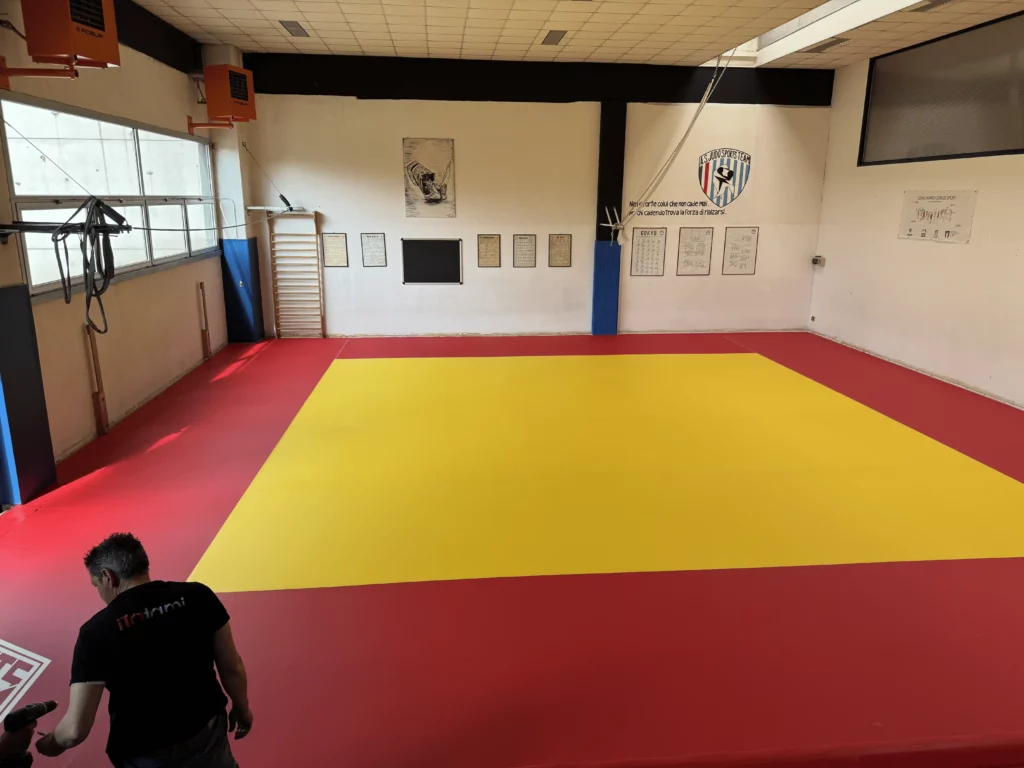
Fixing the tatami correctly is not a simple technical detail, but the first step to ensure safety, stability and professionalism inside every dojo or gym.
Every space has its own unique needs: different surfaces, unique dimensions, and disciplines practiced at different intensities. That's why there's no one-size-fits-all solution—a customized approach is needed, tailored to the floor plan and intended use.
For over twenty years, in iTatami We deal not only with the supply of tatami, but also of space survey, custom design and on-site installation, ensuring an impeccable result in every aspect: technical, aesthetic and functional.
Whether you need to renovate an old floor or set up a combat area from scratch, we can assist you through every stage of the project—from choosing the right model to final installation.
Discover our complete catalog or visit the section dedicated to Martial arts tatami to find the best solution for your training space.
An iTatami tatami is not just a surface: it is the foundation on which the discipline, respect and safety of each athlete is built.

